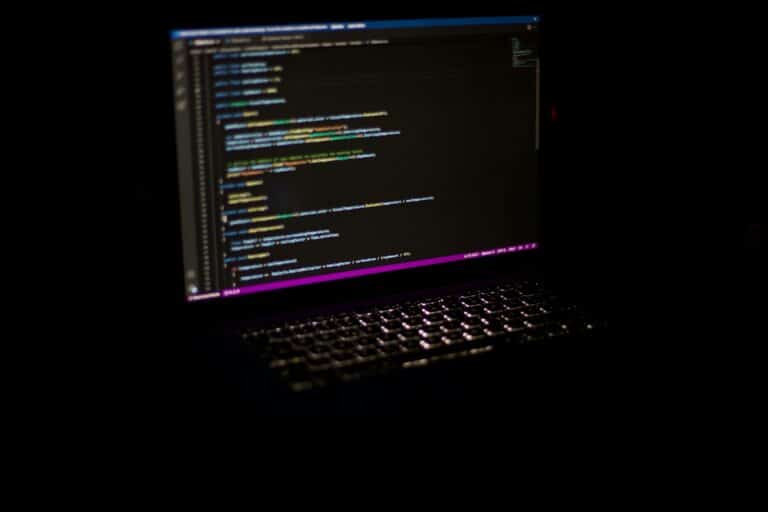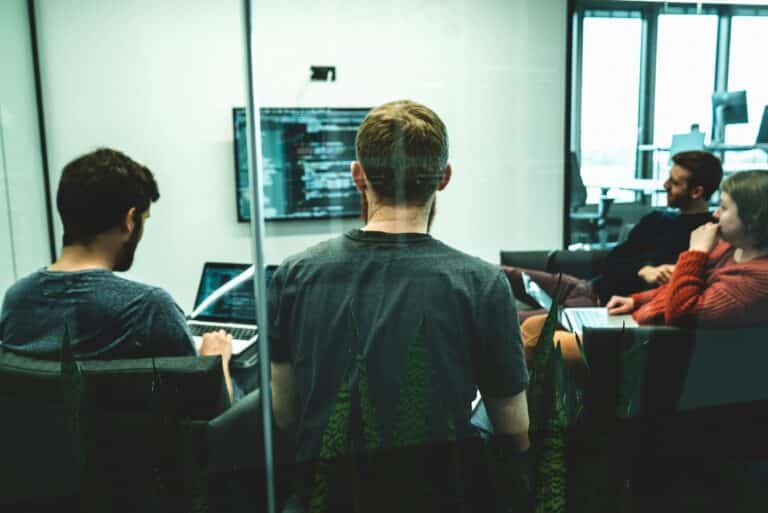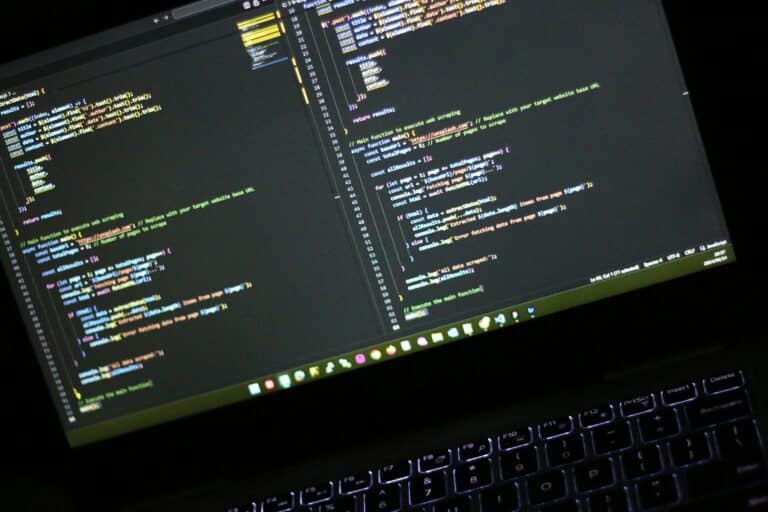Have you ever found yourself in a coding labyrinth, where each line of code becomes increasingly intricate, and distractions are abundant? In the dynamic, fast-paced world of software development, maximizing productivity is not just a luxury – it’s a necessity. The solution may be simpler than you think: distraction-free coding. 🔍👨💻

Distraction-free coding is a methodology that promotes focused, uninterrupted work. It provides a clear path to boost your productivity, cut down on wasted time, and produce high-quality work at a faster pace. It may sound too good to be true, but with the right tools and mindset, distraction-free coding can save you hours each week, and this article will show you exactly how to do it.
Why Distraction-Free Coding is Important?
Consider this: the average programmer is interrupted every three minutes. Each interruption takes about 23 minutes to recover from fully. Over the course of a workday, these minutes add up, resulting in significant productivity loss. 🕒💻
The danger of distractions in programming is not just about the time lost but the errors they can introduce. When we are forced to switch tasks or contexts, our mental model of the problem at hand is disrupted, leading to mistakes and oversights. This is where distraction-free coding shines.
What’s in Store for You in this Article?
This comprehensive guide will dive deep into the world of distraction-free coding, equipping you with the knowledge and tools to significantly boost your productivity. We’ll explore techniques to reduce noise and interruptions, create a conducive work environment, and utilize technology to assist us in our journey to distraction-free coding. 🚀🧠
Understanding the Power of Flow
The first topic we will tackle is the concept of “flow,” a state of deep focus where developers can produce their best work. We’ll learn how to achieve and maintain this state, including the use of mindfulness techniques and optimal work patterns.
Tools and Techniques to Foster Distraction-Free Coding
Next, we’ll delve into the world of tools and techniques that can assist in creating a distraction-free coding environment. From keyboard shortcuts to productivity apps, we’ll provide actionable tips to minimize disruptions and maximize productivity. 🛠️⚙️
Creating a Conducive Coding Environment
The environment in which we code plays a significant role in our ability to focus. We’ll explore how to create a conducive workspace, from physical arrangements to digital setups, ensuring that you can immerse yourself in your code without external disruptions.
Building a Mindset for Distraction-Free Coding
Finally, we’ll touch on the importance of mindset in distraction-free coding. Cultivating the right attitude and habits can go a long way in minimizing distractions and enhancing productivity. We’ll share insights into maintaining motivation, managing stress, and balancing work and rest for long-term success.
In this age of constant connectivity, distraction-free coding might seem like a distant dream. But with the right tools, techniques, and mindset, it’s entirely achievable. Ready to revolutionize your coding productivity? Let’s dive in! 🏊♂️💡
Unlocking the Secret to High Productivity: The Power of Distraction-Free Coding
With the modern software engineering landscape being highly demanding, productivity is the key to staying ahead. The quest to boost productivity has led developers to explore the concept of distraction-free coding. As the name suggests, this is a strategy that focuses on minimizing interruptions and creating a focused coding environment to save you hours each week. As you dive deeper into this article, you will learn the fundamentals of distraction-free coding, its significance, and how to implement it effectively.
Before we delve into the core of distraction-free coding, it’s essential to understand that distraction is one of the main enemies of productivity. Distractions can arise from various sources, such as noisy environments, constant notifications, or even a cluttered workspace. The first step towards boosting your productivity is to identify these sources of distraction and work towards eliminating them.
So, what exactly is distraction-free coding? It is a coding approach where you create an environment conducive to deep, focused work. The primary aim is to minimize interruptions and reduce multitasking, thereby improving concentration and enhancing productivity. Now, let’s delve deeper into the strategies to achieve this.
The Art of Achieving a Distraction-Free Coding Environment
Creating a distraction-free coding environment involves several strategies, ranging from optimizing your workspace to using productivity tools. Here’s a breakdown of some essential steps you can take.
Optimize Your Workspace
One of the fundamental steps towards achieving distraction-free coding is optimizing your workspace. A cluttered workspace can distract you and reduce your focus. Therefore, ensure you have a clean and organized workspace. Having an ergonomic chair and desk, a well-lit environment, and a comfortable temperature can also boost your productivity.
Video Suggestion: “5 Tips to Create the Perfect Coding Environment” by Keep On Coding (YouTube channel).
Use Productivity Tools
Using productivity tools can significantly help to reduce distractions and boost your coding productivity. These tools include text editors and Integrated Development Environments (IDEs) with distraction-free modes. These tools help minimize on-screen clutter, thereby enhancing focus.
Consider the following table comparing some popular productivity tools:
| Productivity Tool | Key Features | Distraction-Free Mode |
|---|---|---|
| Sublime Text | Customizable, powerful API, split editing | Yes |
| Visual Studio Code | Extensible, debug support, Git commands built-in | Yes |
| Atom | Open-source, highly customizable, built-in package manager | Yes |
Take a moment to explore these tools and see which one fits your needs best.
The Power of Breaks and Time Management in Coding
Time management is another critical component of distraction-free coding. It’s not just about coding for hours on end; it’s about coding smartly and effectively. Implementing techniques like the Pomodoro Technique, where you work for a set amount of time (usually 25 minutes) and then take a short break (5 minutes), can significantly enhance productivity and focus.
The Importance of Regular Breaks
While it might seem counterintuitive, taking regular breaks can actually improve productivity. It helps avoid burnout, reduces mistakes, and keeps your mind fresh. Try to take a 5-10 minute break every hour or so. Use this time to stretch, hydrate, or even meditate. Just make sure it’s a complete break from your work.
Video Suggestion: “Why Taking Breaks Makes You More Productive!” by Thomas Frank (YouTube channel)
Time Management Techniques
There are numerous time management techniques that you can use to boost your productivity. The Pomodoro Technique, as mentioned earlier, is one of them. There’s also timeboxing, where you allocate a fixed amount of time to a task, and the Eisenhower Matrix, which helps you prioritize tasks based on their urgency and importance.
Remember, the goal is to code smartly, not just code more. Time management is a crucial part of this equation.
Embracing the Mindset of Distraction-Free Coding
Boosting productivity isn’t just about employing specific techniques or tools; it’s about embracing a productivity mindset. This involves cultivating habits such as deep work, where you focus without distraction on a cognitively demanding task, and mindful coding, where you’re fully present and engaged in the coding process.
Cultivating Deep Work Habits
Deep work is a concept popularized by productivity expert Cal Newport. It involves periods of intense concentration without distractions, leading to high-quality and high-quantity output. Deep work can be cultivated by scheduling periods of focused work, minimizing potential distractions, and then training your brain to focus during these periods.
Video Suggestion: “Deep Work: How to Develop the Most Valuable Skill of the 21st Century” by Thomas Frank (YouTube channel)
The Power of Mindful Coding
Mindful coding is another productivity-boosting strategy. It involves being fully present and engaged in the coding process, rather than mechanically churning out code. By being mindful, you’re more likely to catch errors, come up with creative solutions, and enjoy the coding process more.
Remember, distraction-free coding isn’t a one-size-fits-all approach. It’s about finding what works best for you and implementing it consistently. With the right mindset, tools, and strategies, you can significantly boost your productivity and save hours every week. So, why not start today?
Conclusion
In conclusion, the central theme of our article has revolved around the crucial understanding and application of certain concepts in the field of Information Technology (IT) and Engineering. We have strived to present these complex ideas in a manner that would be comprehensible to our audience, irrespective of their technical proficiency.
We began with the importance of understanding the basics of software engineering 🛠️. Indeed, the foundation of every successful project lies in the mastery of the fundamental concepts. Therefore, we delved into an exploration of the principles of software engineering, and the importance of sound architectural practices. We provided an in-depth look at the intricate design principles and development strategies that professionals employ.
The article then shifted to a focus on the significance of IT in modern society 💻. We acknowledged the growing reliance on technology and the increasing need for individuals who can navigate this complex landscape. The discussion highlighted the essential role IT plays in various sectors, from healthcare to finance, and the immense potential for growth in these areas.
Next, we took a deep dive into some of the most prevalent issues facing the IT and engineering industries today. From security concerns to ethical dilemmas, we highlighted how these challenges can be effectively addressed. In doing so, we emphasized the importance of staying abreast with the latest trends and developments in the field.
The article then transitioned to discussing the future prospects of IT and engineering. We presented a hopeful outlook, emphasizing the opportunities for innovation and growth in these sectors. We also provided a roadmap for individuals seeking to build their careers in these fields.
In summary, the aim of this article has been to provide a comprehensive overview of the current state of affairs in IT and engineering, with a view to equipping our readers with the knowledge and insights needed to thrive in these industries. We believe that the future of these fields is bright, and the possibilities are limitless for those who are willing to embrace the challenges and opportunities that lie ahead.
I hope this article has provided you with valuable insights and piqued your interest in these exciting fields. If you have any questions, thoughts, or insights, feel free to leave a comment below. Please consider sharing this article with others who may find it helpful 🔄. Your engagement helps us spread knowledge and inspire further exploration in these important topics.
For further reading, you may find these sources helpful:
1. The Institute of Electrical and Electronics Engineers (IEEE)
2. The Association for Computing Machinery (ACM)
3. The International Organization for Standardization (ISO)
Remember, the key to success in any field is continuous learning and growth 🚀. Keep exploring, keep learning, and keep growing. And most importantly, enjoy the journey!
Until our next exploration, keep innovating, and stay curious! 🚀💡🌍
[Your Name]
References:
[Insert references here]



